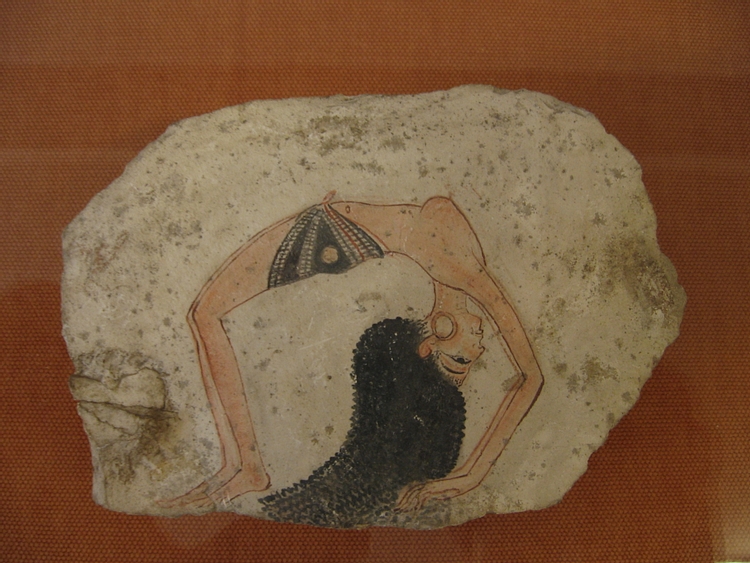The History of Acrobatics: Origins, Evolution, and Cultural Impact
Acrobatics combines physical skill and creativity. Its history spans thousands of years, rooted in ancient cultures that valued strength, balance, and artistry. But where did it all begin? While no single inventor exists, the art of acrobatics emerged in different regions, evolving alongside human culture and technology.
This post explores how acrobatics originated, its transformation over time, and its significance in the past and present. We will also address common questions about acrobatics and share expert insights on its development.
Ancient Origins of Acrobatics
Egypt: The First Evidence
Acrobatics dates back to Ancient Egypt. Frescoes from the 19th Dynasty (1297–1185 BC) show women performing backbends, a pose still used in modern acrobatics. These performers likely trained extensively, passing their skills to the next generation.

Dr. Kara Cooney, an Egyptologist, highlights: "Acrobatic movements in Egypt were tied to ceremonies and symbolized grace and order."
Greece: The Birth of a Term
The word "acrobatics" comes from the Greek words akros (high) and baino (to walk). In Greece, acrobatics began with tightrope walking. Over time, it grew to include floor-based skills like tumbling. Greek acrobats performed at festivals, blending athleticism with entertainment.
China: Tang Dynasty Celebrations
In China, acrobatics flourished during the Tang Dynasty (618–907 AD). Performers amazed crowds at harvest festivals, using props such as hoops and poles. Their acts reflected the community's joy and unity during celebrations.
Professor Liang Hui explains: "Acrobatics in China represents precision and collaboration, values deeply rooted in Chinese traditions."
Acrobatics in the Medieval and Renaissance Periods
In medieval Europe, acrobats performed in royal courts. These entertainers blended tricks with humor to captivate noble audiences. Later, street performers began showcasing acrobatic feats in public squares, making the art accessible to everyday people.
The Renaissance marked a shift. Acrobatics became part of larger spectacles, including fairs and festivals. Performers gained recognition as skilled artists, setting the stage for modern circus arts.
Modern Innovations in Acrobatics
Jules Léotard and the Flying Trapeze
In the 19th century, Jules Léotard revolutionized acrobatics with the invention of the flying trapeze. His performances brought new excitement to audiences, elevating acrobatics to a daring spectacle. He also created the leotard, a garment that remains essential for performers today.
Philip Astley and the Circus
Philip Astley, an 18th-century equestrian performer, is credited with creating the modern circus. His circular arenas showcased acrobatics alongside other acts, drawing large audiences and inspiring similar venues worldwide.
Cirque du Soleil: Redefining the Art
In the 20th century, Cirque du Soleil transformed acrobatics into theatrical art. Combining storytelling with physical feats, Cirque pushed the boundaries of what acrobatics could achieve, captivating audiences globally.
Founder Guy Laliberté says: "We strive to merge emotion with performance, creating unforgettable experiences for audiences."
Ready to start your acrobatics adventure? Find a qualified instructor or program near you and begin learning today!
Cultural and Spiritual Roles
In ancient cultures, acrobatics often held deeper meaning:
- Egypt: Acrobatic movements symbolized balance and were part of religious ceremonies.
- China: Performances during harvest festivals emphasized joy and abundance.
- India: Acrobatics appeared in traditional dances, representing discipline and devotion.
Today, acrobatics continues to bridge cultural traditions and modern entertainment, preserving its rich heritage.
How Acrobatics Differs Today
Accessibility
Acrobatics, once limited to a select few, is now widely available. Gyms, schools, and online resources allow more people to learn and enjoy the art.
Technology
Modern performances use safety equipment and visual effects to enhance the experience. Ancient acrobats relied solely on skill and practice, making their feats all the more impressive.
Diverse Platforms
Acrobatics is now a part of many entertainment forms, from live shows to movies. It continues to inspire and engage audiences worldwide.
Frequently Asked Questions (FAQs)
- Who were the first acrobats? The first recorded acrobats were Ancient Egyptian women depicted in frescoes performing ground-based movements.
- How does acrobatics differ from gymnastics? Acrobatics includes artistic and theatrical elements, while gymnastics focuses on structured, competitive routines.
- What does "acrobatics" mean? The term originates from Greek and means "to walk high." It initially referred to tightrope walking.
- What role does acrobatics play in entertainment today? Acrobatics is a staple in circuses, live performances, and film, blending skill with visual impact.
- How has acrobatics changed over time? From ceremonial performances to global spectacles, acrobatics has evolved to reflect cultural and technological advancements.